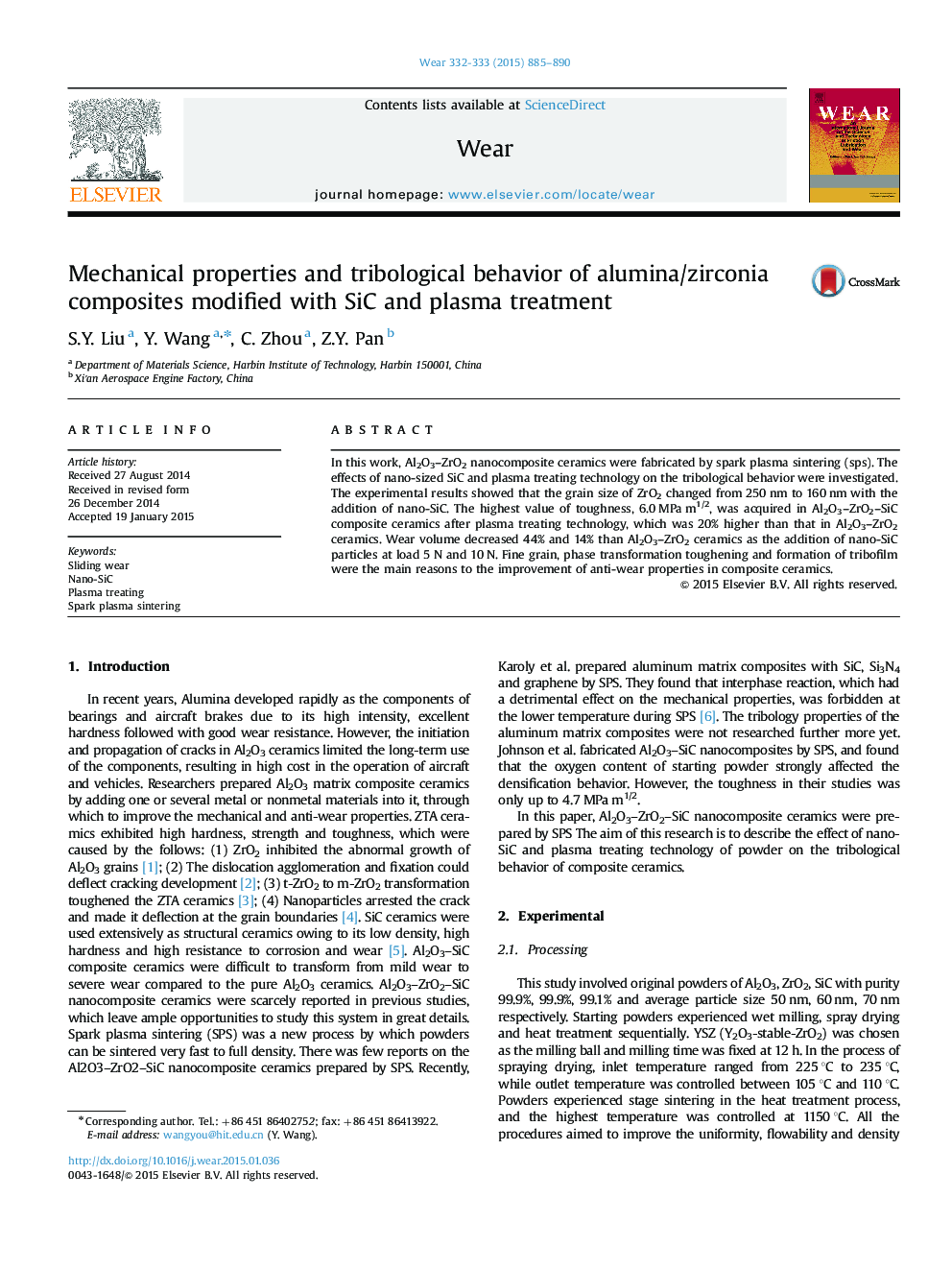| Article ID | Journal | Published Year | Pages | File Type |
|---|---|---|---|---|
| 617093 | Wear | 2015 | 6 Pages |
•We first prepared ZTA ceramics (20 wt% ZrO2 ) by spark plasma sintering.•The powders experienced ball milling, spray drying, heat treatment and plasma treatment.•The grain size of ZrO2 changed from 250 nm to 160 nm with the addition of nano-SiC.•Wear volume decreased 44% and 14% as the addition of nano-SiC particles at load 5 N and 10 N.•Fine grain, phase transformation toughening and formation of tribofilm improved anti-wear properties of ceramics.
In this work, Al2O3–ZrO2 nanocomposite ceramics were fabricated by spark plasma sintering (sps). The effects of nano-sized SiC and plasma treating technology on the tribological behavior were investigated. The experimental results showed that the grain size of ZrO2 changed from 250 nm to 160 nm with the addition of nano-SiC. The highest value of toughness, 6.0 MPa m1/2, was acquired in Al2O3–ZrO2–SiC composite ceramics after plasma treating technology, which was 20% higher than that in Al2O3–ZrO2 ceramics. Wear volume decreased 44% and 14% than Al2O3–ZrO2 ceramics as the addition of nano-SiC particles at load 5 N and 10 N. Fine grain, phase transformation toughening and formation of tribofilm were the main reasons to the improvement of anti-wear properties in composite ceramics.
